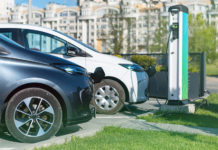Continued popularity of Mazda vehicles in Thailand has enabled the brand to score a 48-per cent growth in May with sales of 5,881 units while year-to-date sales reached 26,886 units, reflecting Thailand’s spectacular economic growth in 2018.
Mr. Chanchai Trakarnudomsuk, President of Mazda Sales (Thailand) Co. Ltd., said that during the first quarter of 2018, the Thai economy enjoyed a 4.8-per cent growth in GDP, which was higher than what analysts had previously expected. “This was due to a large number of positive factors, including growth in investments, production and exports, in addition to tourism,” he said. “For the automobile industry, investors from around the world have shown strong interest in the EEC (Eastern Economic Corridor) scheme, which would dramatically strengthen Thailand’s competitiveness in the global marketplace.”
He said Mazda has been involved in the automobile industry for a long period of time and has successfully gone through various challenges and obstacles. “Mazda continues to produce vehicles that are fun to drive and offer pride in ownership. Mazda thinks out of the box when developing vehicles, allowing us to achieve the SKYACTIV technology that offers extremely high driving pleasure, low fuel consumption and eco-friendliness,” he said.
“Mazda Motor Corporation sees the potential of the Thai automobile market and has invested in setting up a local production facilities, whether it is the AAT assembly plant or the MPMT automatic transmission factory, along with technology transfer in order to further develop personnel and parts makers in the country. Mazda helps develop Thai employees and also creates jobs and income for Thailand,” he said.
Mr. Chanchai said Mazda was able to achieve a growth of 48 per cent in May as the Mazda2 spearheaded the Mazda product lineup in Thailand with sales of 3,898 units, increasing by as much as 57 per cent compared to the same month last year. The CX-5 SUV is second with sales of 763 units, a surge of 151 per cent, the Mazda3 with 433 units, down slightly by 7 per cent, CX-3 with 206 units, down 41 per cent, BT-50 PRO pickup with 577 unit, up by 65 per cent, and the MX-5 roadster with 4 units. In total, Mazda sold 5,881 vehicles in May this year.
Meanwhile during the first 5 months of the year, Mazda accumulated total sales of 26,886 units, growing by 36 per cent compared to the corresponding period last year. Mazda2 sales reached 16,979 units, growing by 45 per cent, followed by the CX-5 with 3,834 units, achieving highest growth of 179 per cent, the BT-50 PRO with 2,642 units, up by 2 per cent, the Mazda3 with 2,099 units, falling slightly by 7 per cent, the CX-3 with 1,321 units, decreasing by 24 per cent, and the MX-5 with 11 units.
Mr. Chanchai added: “Mazda is determined in our production process in order to achieve high-quality vehicles that are developed from new technologies. We do things differently at Mazda and we dare to be ‘Defy Convention’ by turning challenges into inspiration, in order to achieve better results. In addition, our products must have appealing design and attract attention as Mazda is accepted as a brand that shines in terms of design that most resembles concept vehicles. Mazda differs with a ‘customer centric’ philosophy that tries to understand the requirements and behavior of customers in detail. We have adjusted our production to increase capacity and improve cost management in order to cater best to customer requirements. Our operation is connected systematically from production, logistics, procurement, purchasing, stock management and dealer network, ensuring that vehicles are delivered to customers perfectly, whether in terms of timing and quality.”
Meanwhile, Mr. Thee Permpongpanth, Vice President of Marketing and Government Affair, added: “Today digital technology plays a highly important role in our lives and it is also an important factor in spreading our marketing and public relations messages further than ever. With localization for each market around the world, the ‘Mazda Building Block Strategy’ divides future vehicle development into parts. They include: designating the right timing for new technology implementation; developing business models for the producer and consumer as well as a basic foundation that supports and goes in harmony so that we can introduce new technology; and the transition of present technology to the right future technology at the right time in order to offer the best products and services to our customers.”
The post Mazda responds to Thai government’s regional investment hub plan with new global production standards appeared first on Destination Thailand News.


































